 by our College Data Analytics Team
by our College Data Analytics TeamKeiser University - Ft Lauderdale total enrollment is approximately 20,330 students. 10,947 are undergraduates and 1,687 are graduate students.
Male/Female Breakdown of Undergraduates
The full-time Keiser University - Ft Lauderdale undergraduate population is made up of 71% women, and 29% men.
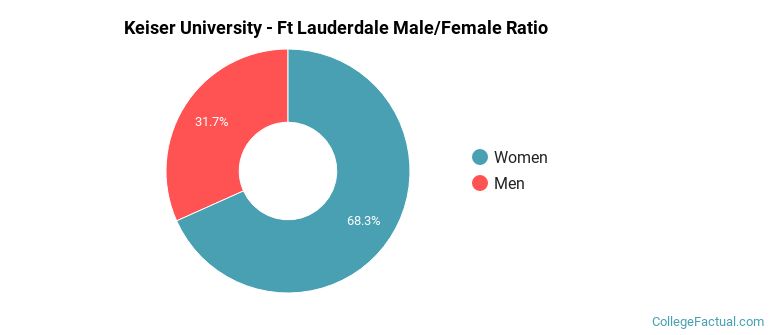
For the gender breakdown for all students, go here.
Keiser University - Ft Lauderdale Racial/Ethnic Breakdown of Undergraduates
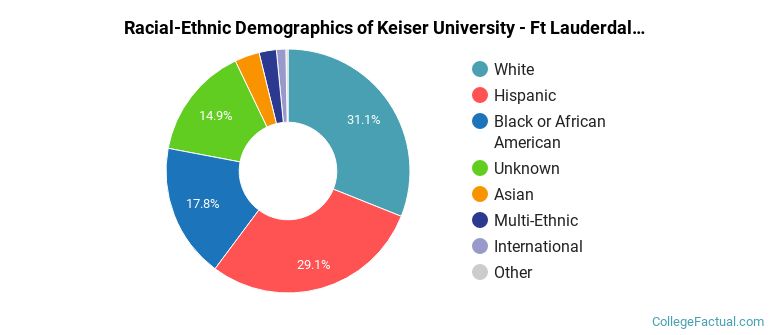
| Race/Ethnicity | Number |
|---|---|
| White | 3,363 |
| Hispanic | 3,079 |
| Unknown | 2,095 |
| Black or African American | 1,831 |
| Asian | 208 |
| Multi-Ethnic | 155 |
| International | 102 |
| Native Hawaiian or Pacific Islander | 29 |
See racial/ethnic breakdown for all students.
Male/Female Breakdown of Graduate Students
About 67% of full-time grad students are women, and 33% men.
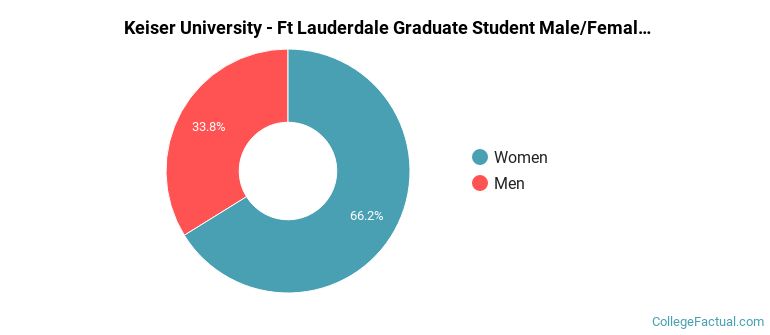
For the gender breakdown for all students, go here.
Keiser University - Ft Lauderdale Racial-Ethnic Breakdown of Graduate Students
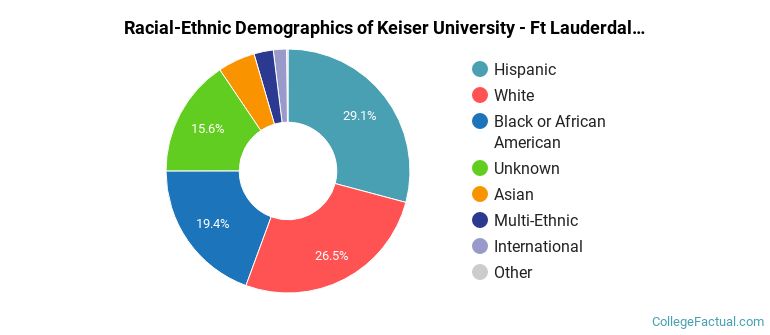
| Race/Ethnicity | Number |
|---|---|
| Hispanic | 561 |
| White | 426 |
| Black or African American | 295 |
| Unknown | 288 |
| Asian | 44 |
| International | 29 |
| Multi-Ethnic | 29 |
| Native Hawaiian or Pacific Islander | 3 |
See racial/ethnic breakdown for all students.
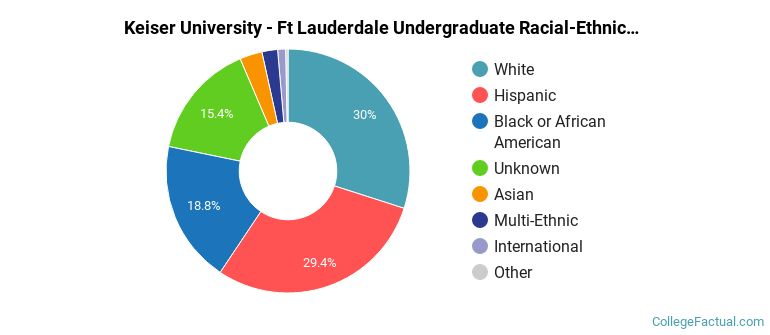
| Race/Ethnicity | Number |
|---|---|
| White | 6,007 |
| Hispanic | 5,804 |
| Black or African American | 3,812 |
| Unknown | 3,686 |
| Asian | 369 |
| Multi-Ethnic | 301 |
| International | 153 |
| Native Hawaiian or Pacific Islander | 49 |
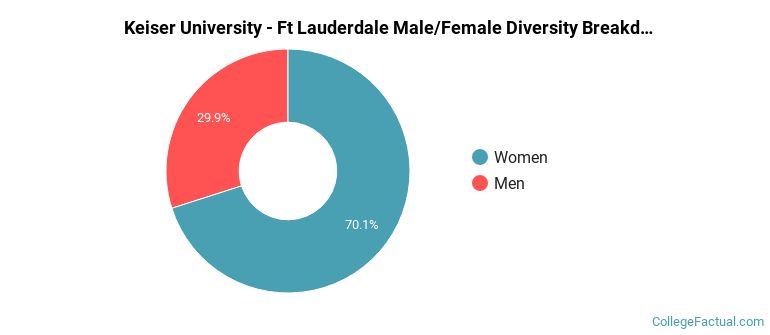
There are approximately 14,769 female students and 5,561 male students at Keiser University - Ft Lauderdale.
Keiser University - Ft Lauderdale ranks 483 out of 2,183 when it comes to geographic diversity.
15.04% of Keiser University - Ft Lauderdale students come from out of state, and 0.8% come from out of the country.
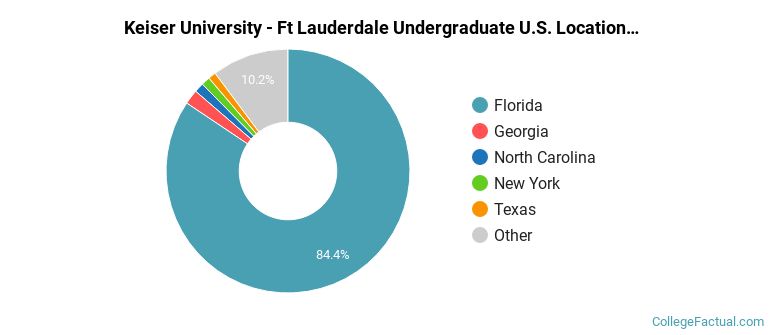
The undergraduate student body is split among 48 states (may include Washington D.C.). Click on the map for more detail.
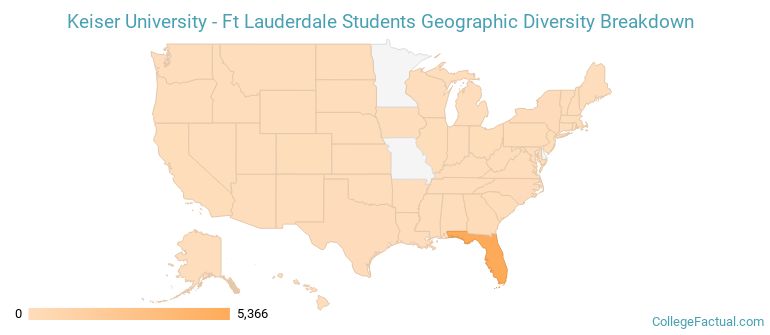
| State | Amount |
|---|---|
| Florida | 5,366 |
| Georgia | 123 |
| North Carolina | 81 |
| New York | 74 |
| Texas | 65 |
Students from 55 countries are represented at this school, with the majority of the international students coming from China, Venezuela, and Brazil.
Learn more about international students at Keiser University - Ft Lauderdale.
A traditional college student is defined as being between the ages of 18-21. At Keiser University - Ft Lauderdale, 17.77% of students fall into that category, compared to the national average of 60%.
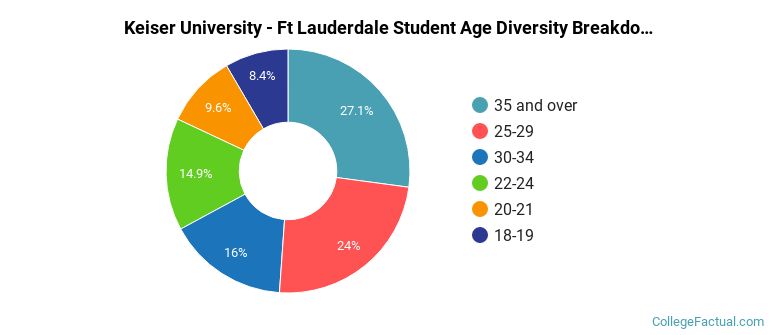
| Student Age Group | Amount |
|---|---|
| 35 and over | 4,908 |
| 25-29 | 4,340 |
| 30-34 | 2,893 |
| 22-24 | 2,693 |
| 20-21 | 1,736 |
| 18-19 | 1,522 |
| Under 18 | 0 |
Footnotes
*The racial-ethnic minorities count is calculated by taking the total number of students and subtracting white students, international students, and students whose race/ethnicity was unknown. This number is then divided by the total number of students at the school to obtain the racial-ethnic minorities percentage.
References
Department of Homeland Security Citizenship and Immigration Services
Image Credit: By Michael Rivera under License
Learn more about how College Factual creates their Diversity Rankings.